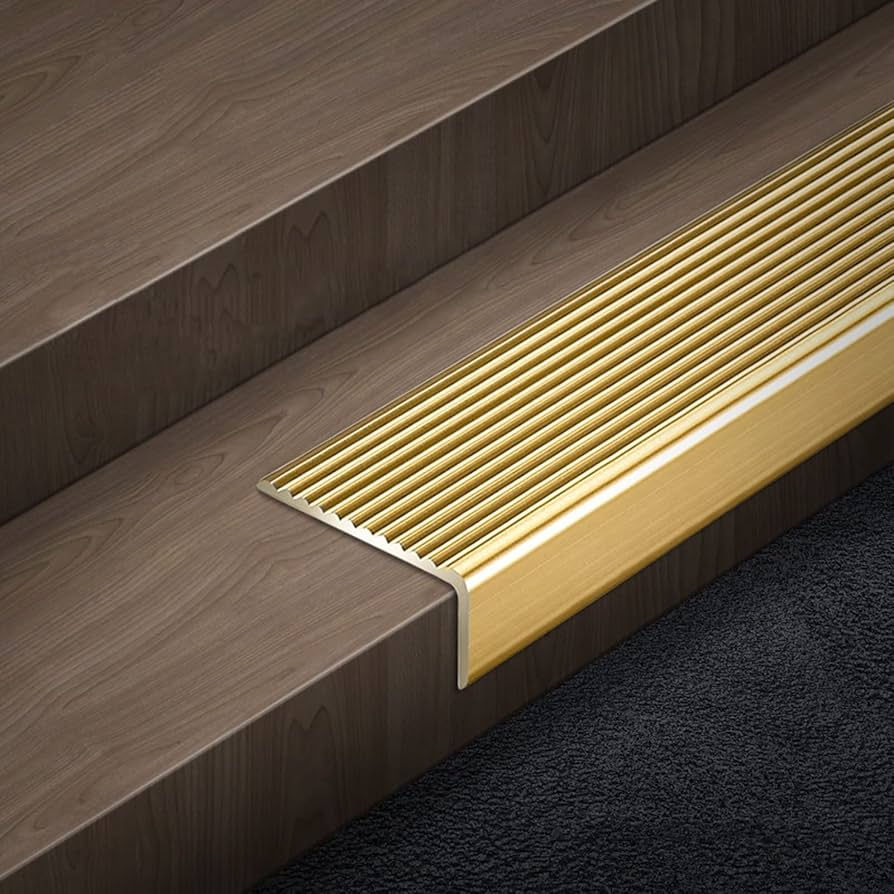Non-Slip Coatings on Metal Stair Nosing Explained
- Floor Safety Store

- Sep 23
- 3 min read
In any building, whether it be a residence, workplace, or public area, stairs are one of the most used features. Installing stair nosing using non-slip coatings is one of the best ways to make steps safer. These minor but crucial elements can prolong the life of staircases, drastically lower the number of accidents, and enhance the staircase's overall appearance.
Stair Nosing
The edge portion of a stair tread that protrudes just past the riser underneath it is known as Stair Nosing. Traditionally, stair nosing makes it simpler to discern where one step finishes and another begins by providing a visible marking for each step's edge. Nosing is also used in contemporary designs to shield stair edges from damage.
Non-Slip Coatings' Function
Increasing traction is the primary goal of a non-slip coating. The natural tendency of stairs to become slick is caused by dust, dampness, or smooth shoe surfaces. Users may quickly lose their footing without enough grip, which could result in falls and injuries. The addition of a textured surface by non-slip coatings lessens slickness and increases user stability. There are several methods for applying these coatings. While some metal stair nosing are produced with abrasive inserts or built-in grooves, others have a surface covering applied after manufacturing.
Types of Metal Stair Nose Non-Slip Coatings
There are various non-slip coatings available, and each has certain advantages.
1. Inserts with Abrasive Properties
These inserts offer superior traction and are set into the metal nosing. Even in high-traffic areas, abrasive inserts made of materials like silicon carbide or aluminum oxide are incredibly effective and long-lasting.
2. PVC or Rubber Inserts
Non-slip strips made of rubber or PVC provide comfort and traction while being gentler underfoot. They are perfect for inside settings where a more comfortable and quiet step is preferred, like offices or classrooms.
3. Coatings Made of Epoxy
It is possible to coat anti slip metal stair nosing with epoxy resin and aggregates. This produces a firm, textured surface that is non-slip. Because epoxy coatings may be customized in terms of texture and color, they are appropriate for areas that need to be both aesthetically pleasing and safe.
4. Textured Powder-Coated Finishes
Textured coatings can be added to powdered metal stair nosing to increase traction. These finishes are aesthetically pleasing and offer sufficient slide resistance for light usage situations, although not being as harsh as abrasive inserts.
Advantages of Non-Slip Coatings: Increased Security
The decrease in accidents is the most evident advantage. Non-slip coatings increase traction, making staircases safer for all users, including kids, the elderly, and persons with mobility impairments.
Resilience
Metal Stair Nosing wear is prevented with non-slip coatings. For instance, epoxy coatings and abrasive inlays are resistant to scrapes and heavy use, prolonging the life of the stairs and the nosing.
Visual Appeal
Since contemporary non-slip coatings come in a variety of colours and finishes, they can enhance rather than take away from the staircase's overall appearance.
Setting up and Maintaining
It's not too difficult to install metal stair nose with anti-slip coatings. Depending on the type of nosing and the material of the stairs, it can be nailed, screwed, or bonded onto the leading edge of each stair tread. For the nosing to remain secure and offer the highest level of safety, proper installation is essential. The form of coating determines the level of maintenance. Rubber inserts and epoxy coatings can be cleansed with basic soap and water, however abrasive inserts might need to be brushed sometimes to get rid of grime.
Selecting the Appropriate Non-Slip Surface
The environment determines the best option. Granular or epoxy-based coatings work best for outdoor staircases that are subjected to weather and frequent use. Latex or PVC inserts might work better indoors where comfort and style are important considerations. Homeowners and building managers should also take into account elements like anticipated foot traffic, maintenance capabilities, and adherence to regional safety regulations.
Conclusion
Metal Stair Edging with non-slip coatings may appear like a minor feature, but they are essential to stair safety, longevity, and aesthetics. Stairs may be made both safe and aesthetically pleasing with the correct coating, whether they are rubber strips in schools or abrasive inlays in industrial areas. Property owners may improve the overall user experience, prolong the lifespan of their stairs, and minimize accidents by purchasing high-quality non-slip stair nosing.






Comments